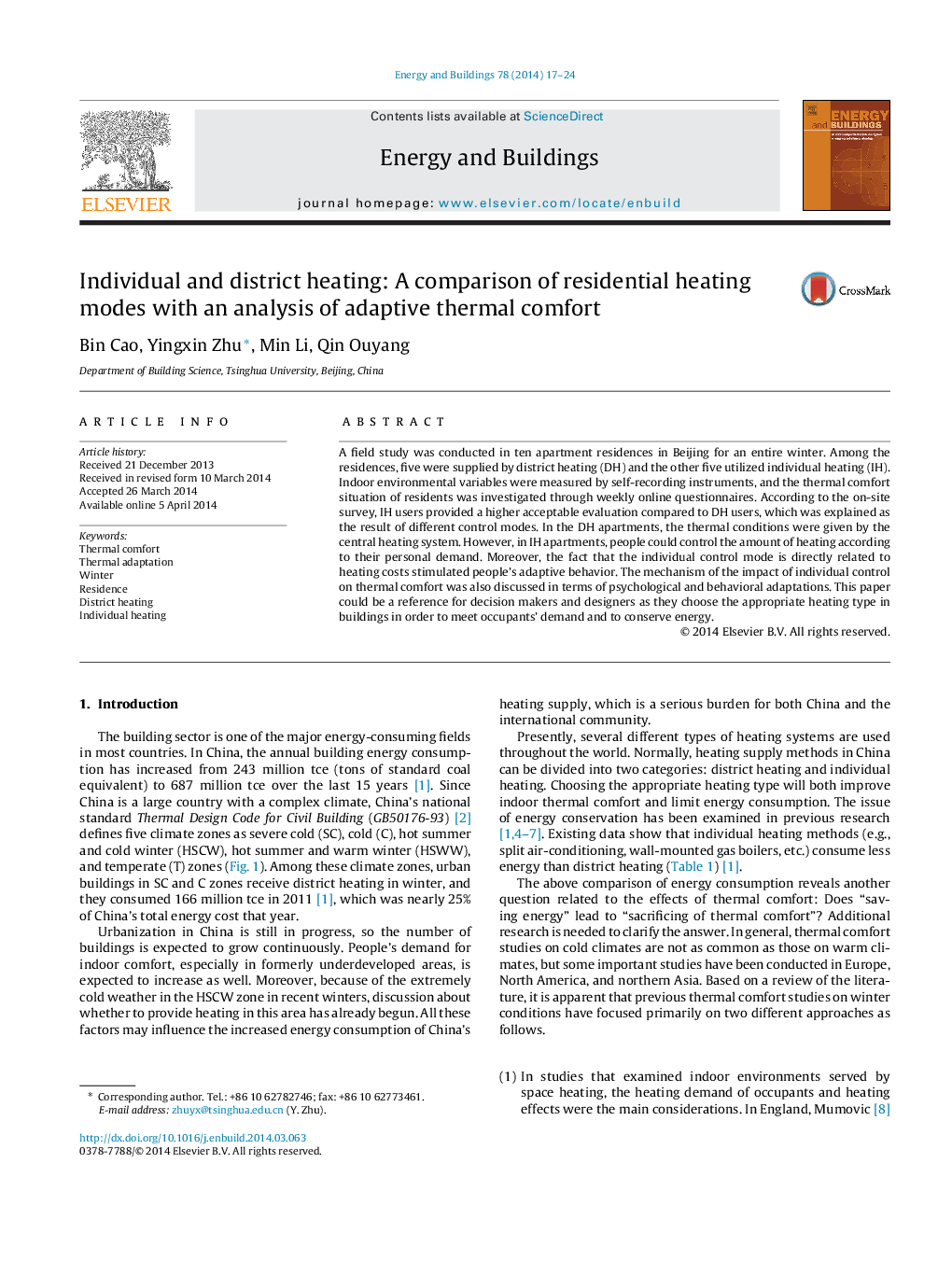| Article ID | Journal | Published Year | Pages | File Type |
|---|---|---|---|---|
| 6733227 | Energy and Buildings | 2014 | 8 Pages |
Abstract
A field study was conducted in ten apartment residences in Beijing for an entire winter. Among the residences, five were supplied by district heating (DH) and the other five utilized individual heating (IH). Indoor environmental variables were measured by self-recording instruments, and the thermal comfort situation of residents was investigated through weekly online questionnaires. According to the on-site survey, IH users provided a higher acceptable evaluation compared to DH users, which was explained as the result of different control modes. In the DH apartments, the thermal conditions were given by the central heating system. However, in IH apartments, people could control the amount of heating according to their personal demand. Moreover, the fact that the individual control mode is directly related to heating costs stimulated people's adaptive behavior. The mechanism of the impact of individual control on thermal comfort was also discussed in terms of psychological and behavioral adaptations. This paper could be a reference for decision makers and designers as they choose the appropriate heating type in buildings in order to meet occupants' demand and to conserve energy.
Related Topics
Physical Sciences and Engineering
Energy
Renewable Energy, Sustainability and the Environment
Authors
Bin Cao, Yingxin Zhu, Min Li, Qin Ouyang,
